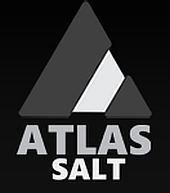 Coro Mining drills 330 m of 0.8% CuT at Marimaca
Coro Mining drills 330 m of 0.8% CuT at Marimaca
CORO DRILLING AT MARIMACA RETURNS MORE EXCITING INTERCEPTS HIGHLIGHTED BY 330M @ 0.80%CUT, 236M @ 0.81%CUT & 188M @1.06%CUT
Coro Mining Corp. has released the results of a further seven reverse circulation (RC) holes from the 39-hole, 8,530-metre hole program completed at its Marimaca copper project, located 22 kilometres east of the port of Mejillones in the II region of Chile. The company announces the results of the remaining four diamond drill (DDH) holes of the six-hole, 2,021-metre program, aimed at providing metallurgical samples and geotechnical information; to corroborate the RC drilling; and to test deeper mineralization. Previous drill results (MAR-01 to MAR-21, MAR-24 to 26 and MAD-01 to 02B) were released on April 28, May 6 and Sept. 6, 2016, and results for the remaining 24 RC holes will be released over the coming weeks.
Coro has agreed a one-month extension to Oct. 24 2016, for its due diligence period for the Minera Rayrock (MR) acquisition announced on Aug. 4 2016; MR is the owner of the Ivan SXEW (solvent extraction and electrowinning) plant located about 18 kilometres south of Marimaca, as well as a large claim position shown in an image on the company’s website. Coro also announces that Minera Penoles de Chile Ltda. has terminated its option over the company’s Llancahue prospect in central Chile.
Alan Stephens, president and chief executive officer of Coro, commented: “We are delighted with this latest batch of results from Marimaca, which continue to exceed our initial expectations for the deposit, both in thickness and grade. So far, drilling has only defined the southwest limit of the mineralization, corresponding to the structural footwall of the deposit at surface. We will shortly be completing a drone-based magnetic survey which we anticipate will further aid our understanding of the deposit and an initial resource estimate is scheduled for completion before year-end.”
Drilling results
Latest results are shown in the associated table where CuT means total copper. Drill hole locations are shown in an image on the company’s website. Drill collars for all holes are shown in a table on the company’s website.
RC INTERSECTIONS
Hole TD From To Intersection CuT
No. (m) (m) (m) (m) (%)
MAR-22 280 60 118 58 0.80
and 148 166 18 0.77
MAR-23 300 40 90 50 0.66
and 116 136 20 2.30
MAR-27 250 64 136 72 0.56
MAR-28 190 No significant results
38 250 212 0.69
38 126 88 0.58
MAR-29 250 including 126 144 18 2.36
158 230 72 0.55
230 250 20 0.54
MAR-30 250 26 56 30 0.46
and 98 110 12 0.30
MAR-31 200 No significant results
DDH INTERSECTIONS
Hole TD From To Intersection CuT
No. (m) (m) (m) (m) (%)
0 188 188 1.06
MAD-03 406 including 0 176 176 1.07
176 188 12 0.98
24 260 236 0.81
24 194 170 0.57
MAD-04 320 194 200 6 3.25
including 200 214 14 1.21
214 228 14 2.98
228 260 32 0.52
Hole TD From To Intersection CuT
No. (m) (m) (m) (m) (%)
0 330 330 0.80
0 88 88 1.08
88 108 20 1.33
108 184 76 0.82
MAD-05 330 including 184 194 10 1.22
216 236 20 1.32
236 304 68 0.51
312 322 10 0.20
322 328 6 0.37
50 144 94 0.58
MAD-06 209 including 50 86 36 1.06
86 144 58 0.29
Geology and mineralization
The Marimaca deposit comprises a significant oxidized enrichment blanket, with some of the enrichment partially or completely preserved as mixed and enriched zones, respectively. Primary chalcopyrite mineralization has been intersected in some of the deeper holes. The overall control to mineralization is a major north-south-trending approximately 60-degree-east-dipping zone of fracturing, defined as the Marimaca structure, crosscut by northeast-southwest-oriented feeder structures, dipping to the southeast. The host rock is a coarse-grained Jurassic diorite intruded along the structure by later diorite plugs and associated dikes that are related to the mineralization, all crosscut by postmineral andesitic sills and dikes. Strong potassic alteration and magnetite introduction accompany the mineralization. Acid solubilities in the oxide zone are good at 74 per cent for all assays greater than 0.1 per cent CuT and rising to 80 per cent for greater than 0.3 per cent CuT.
Agreement terms
Coro has the right to earn a 75-per-cent interest in the property as follows:
- 51-per-cent interest earned in Compania Minera Newco Marimaca (CMNM) with a $125,000 payment together with completion of a National Instrument 43-101 resource estimate and engineering study that demonstrates the technical and economic feasibility of producing a minimum of 1,500-tonne-per-year Cu cathode by Aug. 6, 2018, at Coro’s cost;
- Additional 24-per-cent interest in CMNM earned by Coro upon obtaining financing for the project construction;
- The owner’s interest to comprise a 15-per-cent interest free carried to commencement of commercial production and a 10-per-cent participating interest subject to dilution. The owners at their election may request Coro to loan them the equity portion corresponding to their 10-per-cent interest, if any, recoverable by Coro from 100 per cent of the project’s free cash flow after debt repayments.
Twin-hole analysis
Five of the DD holes were twinned with prior RC holes as follows: MAD-01/MAR-10, MAD-02/MAR-11, MAD-03/MAR-03, MAD-05/MAR-04 and MAD-06/MAR-07. Recoveries in both RC and DD drilling exceeded 90 per cent. Downhole surveying showed that the RC holes steepened more than the DD holes so that with increasing depth, the vertical separation invalidated the twinning exercise. However, for the upper parts of the twins, there was good correlation between DD and RC holes and assays from both drilling methods will be used in the resource estimate.
Sampling and assay protocol
True widths cannot be determined with the information available at this time. Coro RC holes were sampled on a two m continuous basis, with dry samples riffle split on-site and one-quarter sent to the Geolaquim laboratory in Copiapo, Chile, by Coro personnel for preparation and assaying. A second quarter was stored on-site for reference. Core from DDH holes was photographed, logged, split and sampled on-site by Coro personnel and one-half of the core sent to Geolaquim. Samples were prepared using the following standard protocol: drying; crushing to better than 85 per cent passing minus 10 mesh; homogenizing; splitting; pulverizing a 500-to-700-gram subsample to 95 per cent passing minus 150 mesh; and a 125 g split of this sent for assaying. All samples were assayed for CuT (total copper) and CuS (acid-soluble copper) by atomic absorption spectroscopy. A full quality assurance/quality control program, involving insertion of appropriate blanks, standards and duplicates, was employed with acceptable results. Samples showing significant secondary sulphides will be assayed for CuCN (cyanide-soluble copper) in due course. Pulps and sample rejects are stored by Coro for future reference.
Sergio Rivera, vice-president of exploration, Coro Mining, a geologist with more than 32 years of experience and a member of the Colegio de Geologos de Chile and of the Instituto de Ingenieros de Minas de Chile, was responsible for the design and execution of the exploration program and is the qualified person for the purposes of NI 43-101. Alan Stephens, FIMMM, president and chief executive officer, of Coro Mining, a geologist with more than 40 years of experience, and a qualified person for the purposes of NI 43-101, is responsible for the contents of this news release.
About Coro Mining
The company’s assets include its 65-per-cent interest in SCM Berta; the Marimaca project; the Llancahue prospect, optioned to Industrias Penoles; and a royalty on the San Jorge copper-gold project located in Argentina.
http://www.coromining.com/s/newsreleases.asp
































